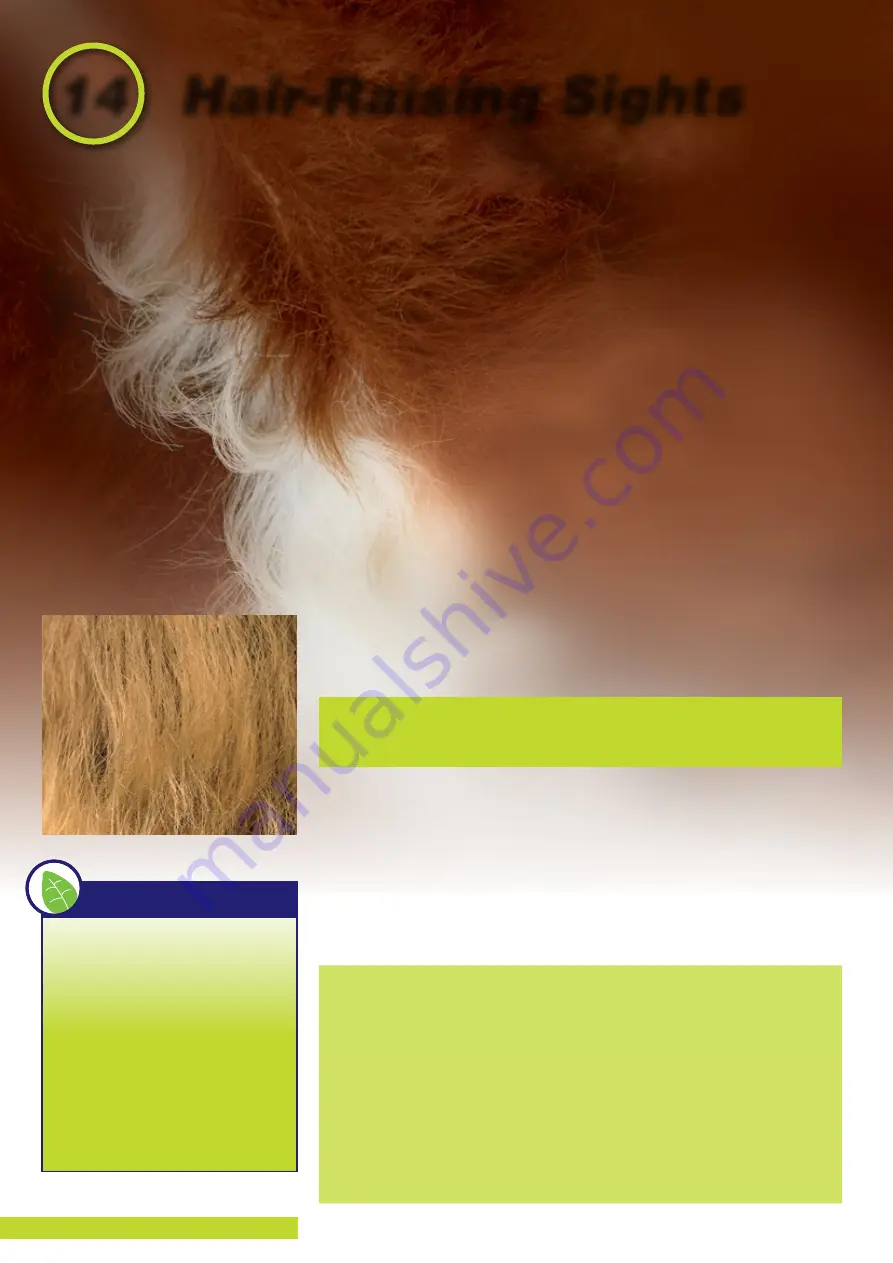
Did You Know?
While they’re not an exclusive characteristic of mammals,
hairs are certainly one of their typical traits. In contrast to
fish, frogs, and lizards, mammals are warm-blooded (or ho-
moiothermic) animals. This means that their body tempera-
ture is independent of the outside temperature. Mammals
maintain a more or less constant temperature in their
bodies. That uses up a lot of energy but also offers
significant advantages. For example, while a lizard
must first warm itself up in the sun in order to be
agile enough to search for food, the mouse has
already been nosing its way around for hours.
Unlike the lizard, however, the mouse also
has to be careful to not lose too much
heat. Its fur helps out in this respect by
retaining air between the individual
hairs, which is heated by the body
and therefore provides a warm air
cushion against the cold. A cozy
wool sweater keeps you warm in
winter in the same way.
The Men and Women of the Criminal Investigation
Department
You’d likely find the very best specialists in microscopic images of hairs in the fo-
rensic unit of the criminal investigation department. When it comes to finding tiny
traces and clues at a crime scene, these detectives are masters of their art.
One aspect of forensic work is the identification of hairs. The hairs of humans
and animals can be distinguished under the microscope, and often small details in
the structure of the surface are all that allow the hairs of different animals to be
differentiated from each other, or sometimes it’s the thickness of the hair. Under
the microscope, animal hairs, plant hairs, plant fibers (such as flax or linen), and
synthetic fibers can all be differentiated from one another.
Hairs and Fibers
These objects pose no problem at all. You will need:
• a slide and a cover slip
• the pipette and water
• the tweezers
• a wide variety of hairs and fibers from articles of clothing, shopping bags or
rugs, and from animals and plants, too, if you wish
Simply place the objects onto a slide under a cover slip and away you go. Ex-
periment with observing the objects dry or in water to see which provides the
best image. In this respect, different fibers can behave very differently.
A blond person has approximately
150,000 hairs on his or her head.
There apparently really are people
who find the time to count the hair
on other peoples’ head. In any case,
we know that the number of hairs
on a person’s head depends on the
hair color. Accordingly, blonds have
the most with 150,000, followed by
people with brown hair (110,000),
black hair (100,000) and, finally, red
hair (90,000). Add to that about
another 420 eyelashes and 600 eye-
brow hairs.
Hair-Raising Sights
14
46
Summary of Contents for TK2 Scope
Page 1: ...Experiment Manual ...
Page 52: ......







































